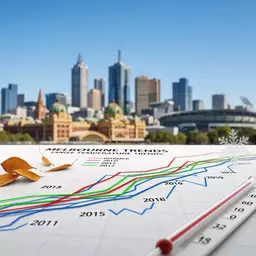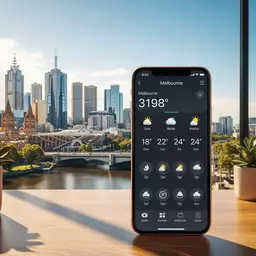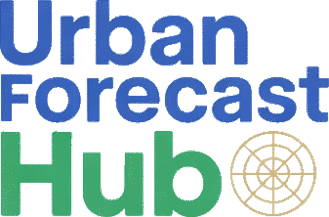Melbourne's Urban Temperature Trends Explained

As we navigate the complexities of urban life in Melbourne, understanding the factors that influence our city's temperatures becomes essential. From urbanization to climate change, these elements shape our experiences daily. Let's delve into the critical insights that can empower us to adapt and thrive.
What You Will Learn
- The urban heat island effect makes city areas warmer than rural surroundings, primarily due to human activities.
- Climate change is leading to more frequent and intense heat waves in Melbourne, affecting daily life and energy consumption.
- Temperature variability across neighborhoods can impact living conditions, energy use, and recreational planning.
- Urbanization and loss of vegetation significantly contribute to rising temperatures, highlighting the need for more green spaces.
- Strategic urban planning can mitigate heat retention, promoting a more livable and resilient city environment.
Melbourne's Urban Temperature Dynamics: Key Contributing Factors
Understanding the factors that influence Melbourne's urban temperatures helps us appreciate the city's unique climate challenges and opportunities for adaptation.
Urban Heat Island Effect
Urban areas are significantly warmer than rural surroundings due to concrete, asphalt, and building materials absorbing and retaining heat.
- Increased heat retention
- Reduced natural cooling
Climate Change Impacts
Global climate change leads to shifts in local climate, resulting in more extreme weather conditions and prolonged warm periods.
- Increased heat wave frequency
- Longer warm periods
Vegetation Loss
Removal of trees and plants reduces natural cooling through evapotranspiration, leading to temperature spikes and decreased air quality.
- Higher surface temps
- Increased energy demands
Built Environment Influence
Building materials, orientation, and land use patterns contribute to heat retention and affect air circulation within the city.
- Dense building effects
- Reflective material heat
Understanding Melbourne's Urban Temperature Trends
As a community deeply acquainted with Melbourne's variable weather, it's crucial to understand the urban temperature trends that shape our daily lives. The interplay between urbanization and climate dynamics plays a significant role in how we experience heat, especially during summer months when temperatures can soar. In this section, we'll explore the urban heat island effect, the impacts of climate change, and the variability of temperatures across our vibrant city.
Defining the Urban Heat Island Effect in Melbourne
The urban heat island effect refers to the phenomenon where urban areas experience higher temperatures than their rural surroundings. This is primarily due to human activities and the materials used in city infrastructure, such as concrete and asphalt, which absorb and retain heat. In Melbourne, this effect can be quite pronounced, particularly in densely populated neighborhoods where green space is limited. You can learn more about this phenomenon and its effects in Melbourne from Climate Action Merribek's insights on the urban heat island effect.
- The concentration of buildings and vehicles increases heat retention.
- Reduced vegetation leads to less natural cooling through shade.
- Heat generated from human activities, like transportation and energy use, contributes significantly.
Understanding this effect allows us to acknowledge why some areas of Melbourne can feel markedly warmer during the day. By embracing urban planning strategies that include more green spaces, we can help mitigate these temperature increases.
The Impact of Climate Change on Urban Temperature Patterns
Climate change is another critical factor influencing temperature patterns in Melbourne. As global temperatures rise, we are witnessing shifts in our local climate that directly affect daily life. It's important to recognize that climate change doesn't just mean warmer summers; it also leads to more extreme weather conditions, including intense heat waves. Further details on these impacts can be found in the Victorian Climate Science Report for Greater Melbourne.
- Increased frequency of heat waves.
- Longer-lasting warm periods.
- Changes in seasonal temperature averages.
As a passionate advocate for climate awareness, I believe that understanding these patterns is essential for adapting our lifestyles and preparing for future challenges. We can actively engage in climate conversations and initiatives that promote resilience in our community.
Exploring Temperature Variability and Its Effects on Urban Areas
Temperature variability in urban areas like Melbourne can lead to significant differences in living conditions. It's not uncommon for one neighborhood to experience a few degrees higher than another due to factors such as elevation, land use, and vegetation cover. This variability can greatly affect our choices about where to live, how to plan outdoor activities, and even how we manage energy consumption. Annual climate reviews, such as the Bureau of Meteorology's annual climate statement for Melbourne, often highlight these trends.
- Microclimates can create hot spots in urban areas.
- Shaded areas tend to be cooler and more comfortable.
- Understanding these differences allows for better urban design and community planning.
By diving into the dynamics of temperature variability, we can equip ourselves with knowledge that empowers us to make informed decisions about our environment. After all, the more we understand, the better prepared we are to adapt and thrive in Melbourne's ever-changing climate.
We Want to Hear From You!
As we explore the intricate dynamics of Melbourne's urban temperature trends, we want to know how these changes have affected your daily life. Have you noticed any significant temperature differences in various neighborhoods? What strategies do you employ to cope with the heat during summer? Share your thoughts below:
Examining the Causes of Rising Temperatures in Melbourne
As we dive deeper into the factors behind rising temperatures in Melbourne, it’s essential to recognize how urban environments contribute to this phenomenon. The city’s growth and development play a significant role in altering temperature patterns. In this section, we’ll explore several key elements that cause Melbourne to heat up, affecting both our daily lives and the broader climate.
The Role of Urbanization in Temperature Increases
Urbanization is a driving force behind rising temperatures in Melbourne. As we transform natural landscapes into bustling cityscapes, we create environments that absorb and retain heat. This is particularly evident in areas filled with concrete, asphalt, and buildings. These materials absorb solar energy during the day and release it slowly at night, contributing to a phenomenon known as the Urban Heat Island (UHI) effect.
- Increased surface temperatures from buildings and roads
- Reduction in green spaces, which cool the air
- Higher energy consumption due to air conditioning usage
As Melburnians, we can feel the difference. Have you noticed how city centers can feel significantly hotter than suburbs? Understanding this relationship helps us adapt our daily activities, like opting for morning walks or enjoying our parks during cooler hours!
Vegetation Loss and Its Contribution to Urban Heat
Another critical factor influencing rising temperatures is the loss of vegetation across our urban landscape. Trees and plants play a vital role in cooling our environment through a process called evapotranspiration. When vegetation is removed for development, we lose this natural cooling effect.
Impact of Reduced Tree Canopy on Local Climate
The impact of a reduced tree canopy is profound. Without trees to provide shade and release moisture, urban areas can experience significant temperature spikes. Here are some key impacts:
- Increased surface temperatures during summer
- Decline in air quality as pollutants accumulate
- Higher energy demands for cooling systems
As we continue to build and expand, it’s crucial to recognize the importance of maintaining our green spaces. Investing in local tree planting initiatives can not only beautify our neighborhoods but also help cool the city.
The Influence of Built Environment and Land Use on Urban Heat
The built environment and land use patterns significantly influence Melbourne’s temperature trends. By analyzing how we design our cities, we can identify areas that contribute to heat retention. Factors such as building orientation, material choices, and land use decisions all play a role.
- Dense buildings can create wind tunnels, affecting air flow
- Reflective materials can exacerbate heat effects
- Mixed land use can help reduce the need for motor vehicles
By understanding these influences, we can advocate for smarter urban planning practices. It’s not just about aesthetics; it’s about creating a livable city that can withstand the heat!
Frequently Asked Questions (FAQs)
- What is the Urban Heat Island (UHI) effect?
- The Urban Heat Island (UHI) effect describes how urban areas are significantly warmer than surrounding rural areas due to human activities and the heat-absorbing properties of city infrastructure materials like concrete and asphalt.
- How does climate change specifically impact Melbourne's temperatures?
- Climate change leads to more frequent and intense heat waves, longer warm periods, and shifts in seasonal temperature averages in Melbourne, affecting daily life and increasing energy consumption.
- Why do temperatures vary across different neighborhoods in Melbourne?
- Temperature variability across neighborhoods in Melbourne is influenced by factors such as elevation, land use patterns (e.g., density of buildings), and the amount of vegetation cover, creating microclimates or "hot spots."
- What role does urbanization play in the increase of Melbourne's temperatures?
- Urbanization contributes to rising temperatures by replacing natural landscapes with heat-absorbing structures like buildings and roads, and by reducing green spaces, which are essential for natural cooling.
- How does vegetation loss affect urban heat?
- The loss of vegetation, particularly tree canopies, reduces natural cooling through evapotranspiration, leading to higher surface temperatures, decreased air quality, and increased energy demands for cooling systems in urban areas.
Recap of Key Points
Here is a quick recap of the important points discussed in the article:
- The urban heat island effect in Melbourne causes urban areas to be significantly warmer than surrounding rural areas due to human activities and materials like concrete and asphalt.
- Climate change is leading to increased frequency and intensity of heat waves, altering Melbourne's temperature patterns and seasonal averages.
- Temperature variability across neighborhoods is influenced by factors such as elevation, land use, and the presence of vegetation, affecting living conditions.
- Urbanization contributes to rising temperatures by replacing natural landscapes with heat-absorbing structures, thereby necessitating better urban planning to include green spaces.
- The loss of vegetation reduces natural cooling effects and negatively impacts air quality, underscoring the importance of maintaining and expanding tree canopies in urban areas.
- Design elements of the built environment, including building orientation and material choices, play a crucial role in influencing local temperatures.







